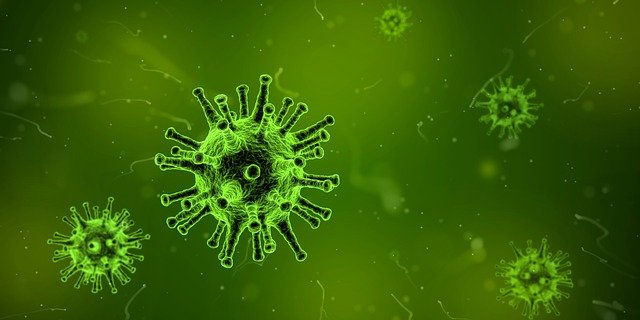“Ringa ringa rosies, a pocket full of posies, a tissue, a tissue, we all fall down”. Did you know that this very ubiquitous oft repeated nursery rhyme actually refers to the Bubonic Plague pandemic (caused by a bacterium Yersinia pestis) which swept Europe in the 1700’s? The ‘rosies’ resembled red blotches on the skin, ‘posies’ were sweet-smelling flowers or herbs carried by people to ward off the stench , ‘Atishoo’ referred to the sneezing fits that people had and the meaning of ‘we all fall down’ is quite obvious. The primal fear of the epidemic of those times is making a comeback as Covid-19 pandemic (caused by a virus SARS-Cov-2) rears its ugly head yet again. This leads us to think how much better the world would have been if viruses did not exist in the first place! The thought prompted me to undertake some research on the subject which resulted in a stupefying revelation. If viruses indeed did not exist, we would still be laying eggs instead of giving birth to live young. If this wasn’t strange enough, it also transpires that about 8% of the human genome consists of viral DNA sequences which made its way into our genome through viral infections in some ancestral living forms in the far distant past.
Before anybody starts doubting the stability of my mind, I would like to start presenting my case. A basic primer on viral life cycle and reproductive strategy would help readers to follow my arguments better. I promise to exclude technical jargon as far as possible to maintain readability. A virus as we all know is a microscopic infectious agent that can only reproduce by replicating inside cells of other organisms. It has a particle that can survive for a short amount of time out in the open but it needs to parasitize other organisms in order to propagate itself. Though viruses can take many forms, the basic viral structure consists of a genetic material (either DNA or RNA) contained within a protein capsid and sometimes there is the presence of a lipid bilayer viral envelope containing protein particles which enable it to actually violate the host cell membrane in order to gain access inside the cell. I mention a small interesting point here. Lipids are essentially fats or oils which can be dissolved by soap or alcohol. Loss of lipid viral envelope deactivates the virus. Now you understand why doctors advised washing hands with soap or using alcohol containing sanitizers to prevent Covid infections!
As we delve into viral life cycle and reproduction, a word on what is called the “Central Dogma of Molecular Biology” will be necessary. It is called the central dogma as it is present in all forms of life. Proteins are the fundamental units of life comprising structural proteins as well as functional proteins called enzymes. DNA which contains the blueprint of an organism creates RNA (transcription) which acts as templates for creating proteins by protein synthesizing cell organelle called Ribosomes (Translation). The flow of information is always unidirectional: DNA-(Transcription)->RNA-(Translation)->Proteins.
If viruses indeed did not exist, we would still be laying eggs instead of giving birth to live young.
During a viral infestation, the viral envelope attaches itself to the host cell membrane with the help of envelope proteins and inserts the capsid containing the RNA (Viral genetic material can also be DNA in which case the sequence will comprise of some additional steps) and occasionally some additional enzymes into the host cell. The capsid ruptures, releasing the RNA into the host cell. The RNA utilizes the host RNA Polymerase enzymes to create new viral RNA and the host ribosomes to create Viral capsid proteins. The newly created viral parts are now assembled into multitudes of daughter viruses which are then released from the host cell to restart the infection cycle.
If at this point readers have started to think that this would be a high school biology lesson then they are advised to hold on to their seats tightly because things are about to get murky fast. Sometimes the virus introduces a new kind of viral enzymes called Reverse Transcriptase into the host. With this enzyme the virus copies its viral RNA sequence into a complementary DNA sequence and inserts this newly formed Viral DNA inside the host DNA. There the viral DNA may lie dormant as part of the host for variable amounts of time and then express itself by coding for viral RNA which starts the infestation phase. This kind of viral DNA sequence embedded inside the host DNA is called a Retrovirus and the classic example of this is HIV (Human Immunodeficiency Virus) which expresses itself as AIDS (Acquired Immunodeficiency Syndrome). The strangest fact with retrovirus is that its action defies the “Central Dogma” and runs in the reverse direction of Transcription making DNA from RNA. You may have already noticed that ‘RT’ of RT-PCR test for Covid-19 actually refers to Reverse Transcriptase. No points for guessing that!
In a further twist, at some point of time in the past, some retrovirus had managed to infect the germline (sex gametes) of the host and thus started to be passed on from generation to generation over long periods of geologic time as the organism evolved into new species. Now it is termed as Endogenous Retrovirus (ERV). Human genome contains numerous such retroviruses which accounts for 8% of the total human genome as mentioned earlier. The question arises here is why these viral DNA doesn’t make us sick? The reply to this question is that mutations over time have rendered most of the Human Endogenous Retroviruses (HERV) harmless while some of them have even been co-opted for useful jobs. Fortunately HIV hasn’t been able to infect the germline of the human genome yet and transmission of the condition from mother to child is due to transmission through body fluids across the placenta and not heritable.
A virus as we all know is a microscopic infectious agent that can only reproduce by replicating inside cells of other organisms.
The placenta of mammals is a fascinating organ facilitating live childbirth over egg laying. It mediates between the mother and child in which it prevents the mother’s body from attacking and rejecting the paternal cells in the embryo while at the same time facilitating transfer of nutrients and oxygen from mother to child and removal of CO2 and wastes from child to mother. For this the placenta needs to embed itself into the maternal uterus while suppressing the latter’s immunological responses, very virus like actions in my opinion. Presence of retroviral like particles were discovered in Human Placenta in 1973 and in the following years retroviral DNA sequences were found in the Human Genome as evidenced by the presence of genes for envelope proteins, reverse transcriptase enzyme and retroviral core. These genes had been however rendered ineffective by mutations (Pseudogenes) and are present in the genome as a kind of ‘genetic fossil’. All these discoveries lead to the speculation of the viral origin of Mammalian Placenta. In 1987, active presence of HERV-W in Human Placenta was confirmed where it was found to code for proteins syncytin 1 & 2 which helps in dissolving cell membranes and creation of a large multinucleated cell layer(sincytium) which acts as an intermediary between foetus and mother. Cytotrophoblast cells from this layer proliferate and invade maternal endometrium (inside layer of the uterus) which is key to implantation of embryo and placental development. Cytotrophoblasts fuse and differentiate into multinucleated sincytiotrophoblasts which are covered by maternal blood vessels and cover the embryo. HERV-W gene also helps in immunosuppressive functions.
Now with all the evidence in place, we can recreate the old story. Very very far into the geologic past some strain of virus infected an ancestral life form which was on the way to become a placental mammal but was still laying eggs. The virus turned endogenous retrovirus and started being transmitted from generation to generation. At some point, the ERV underwent mutations and developed the capability to transgress into the maternal tissue leading to the development of the placenta. The placenta provided several evolutionary advantages over the egg in the reproductive process and was selected as preferred reproduction method leading to the emergence of mammals. Furthermore, the placenta is needed to fuel the development of the large brain of the human child which would never have been possible using the meagre supply of nutrients stored in an egg. So it was the virus that made us human after all!
Other beneficial involvements of retroviruses include possibilities of its use in gene therapy where viruses are used to fix ‘broken’ genes which causes genetic disorders and in the study of evolution of species where retroviruses act as markers. Detailed study of these subjects is however beyond the scope of this article.







